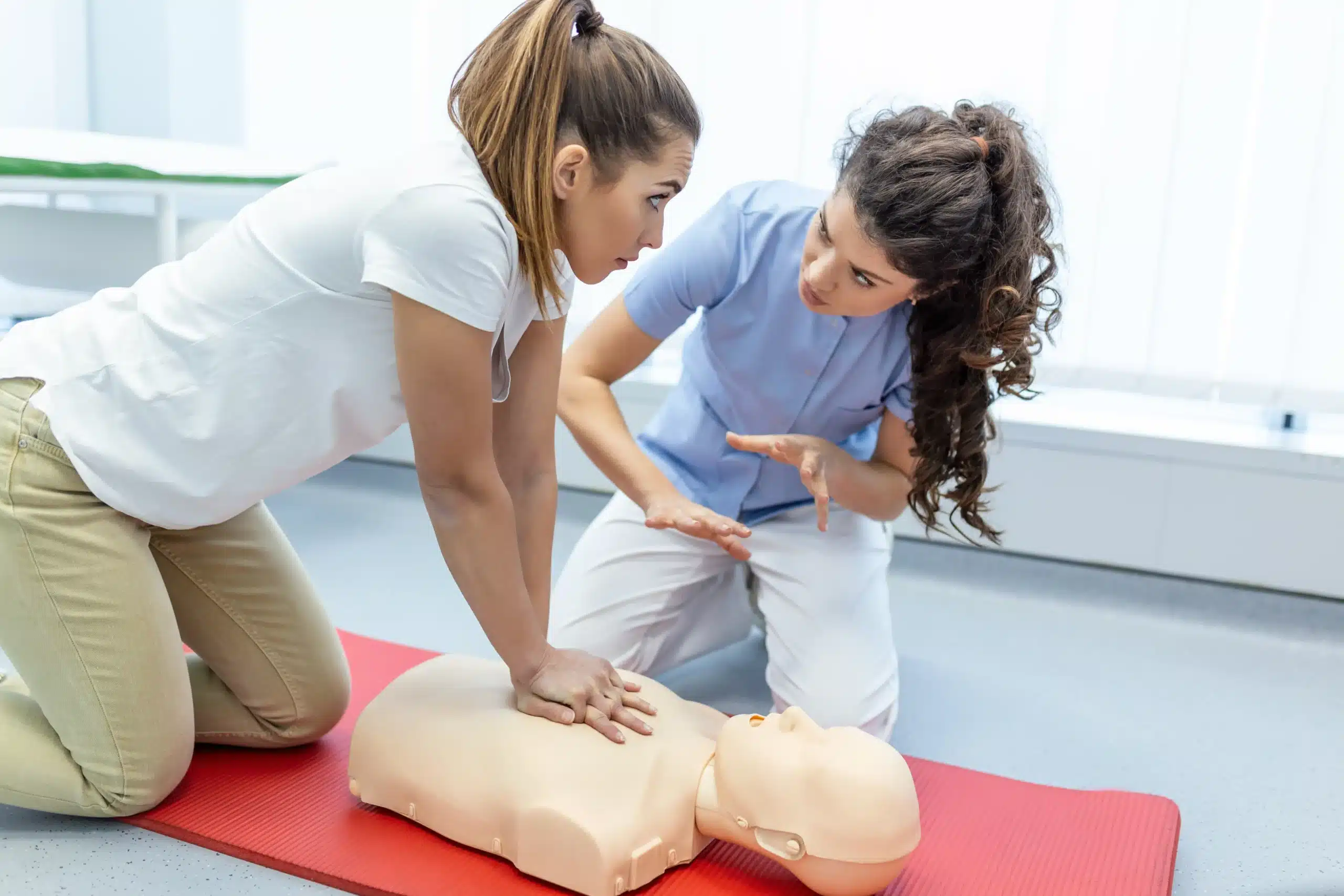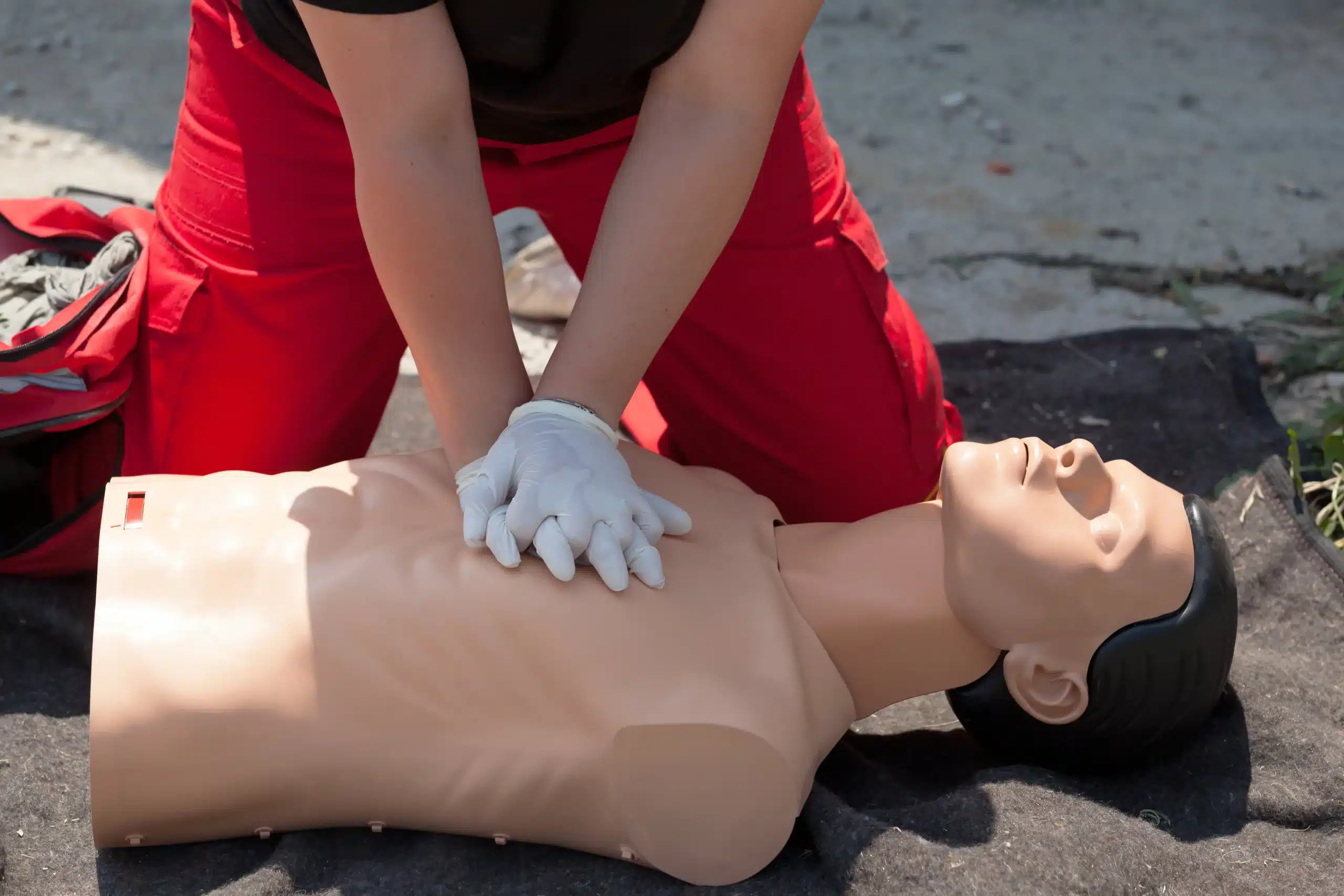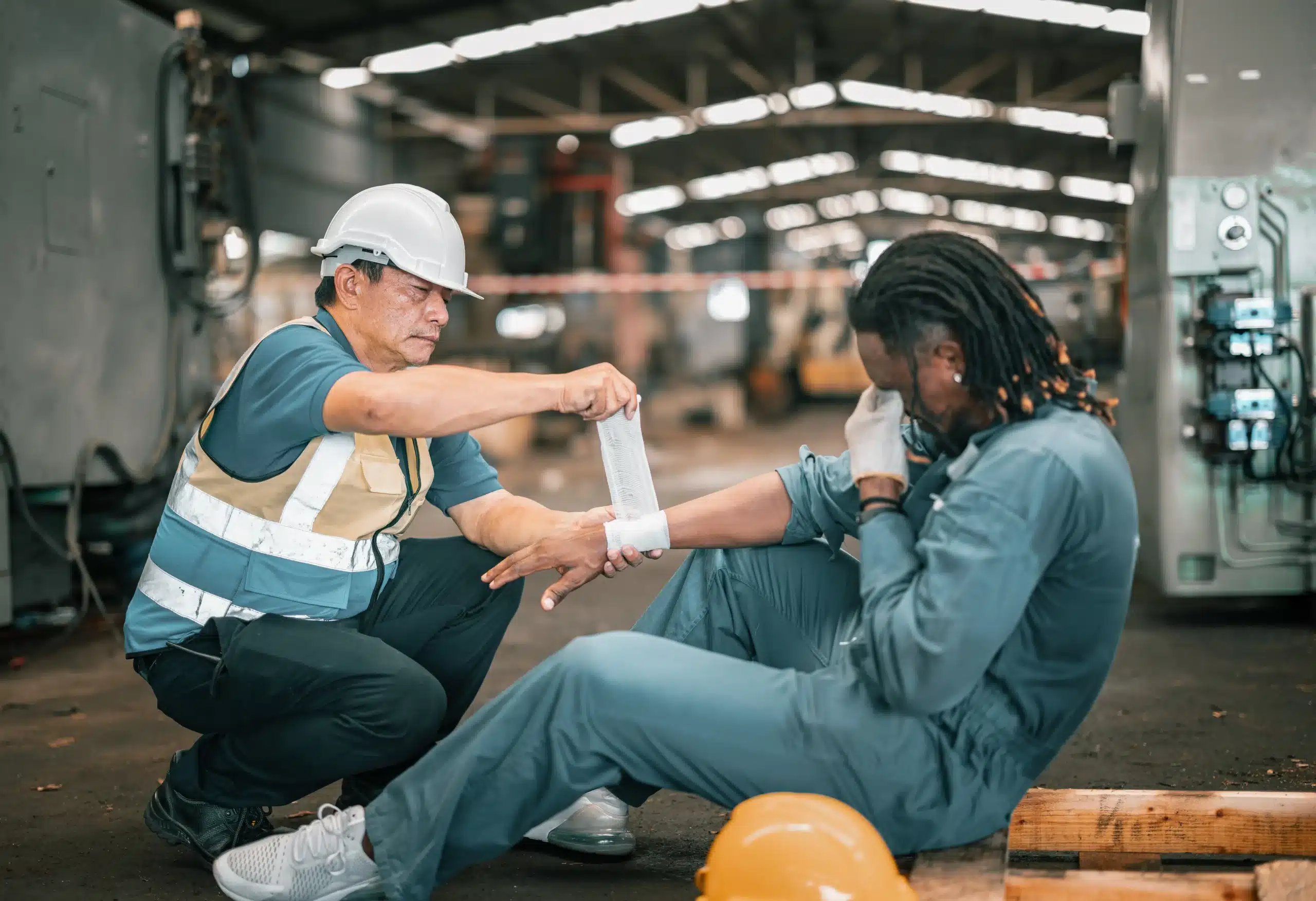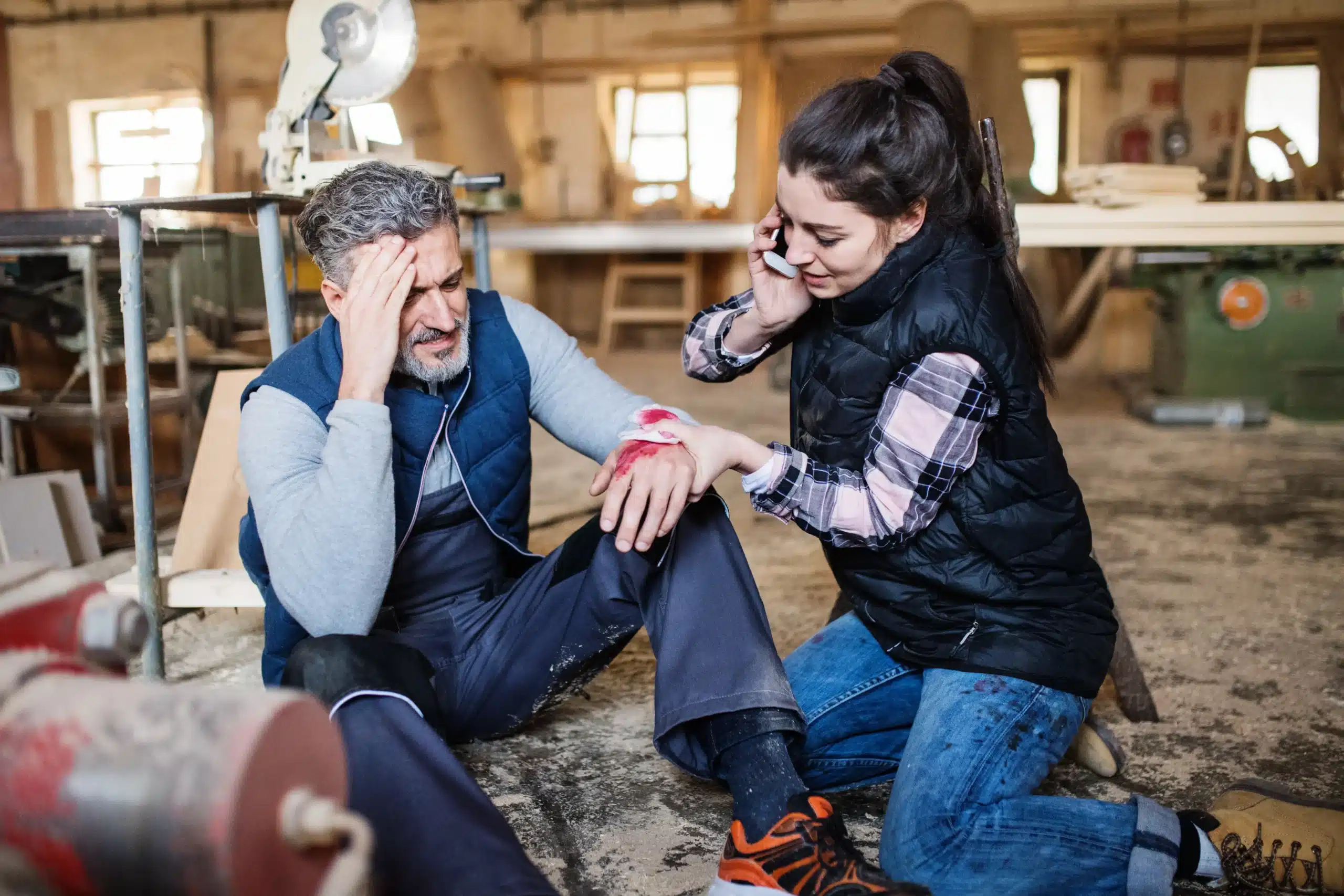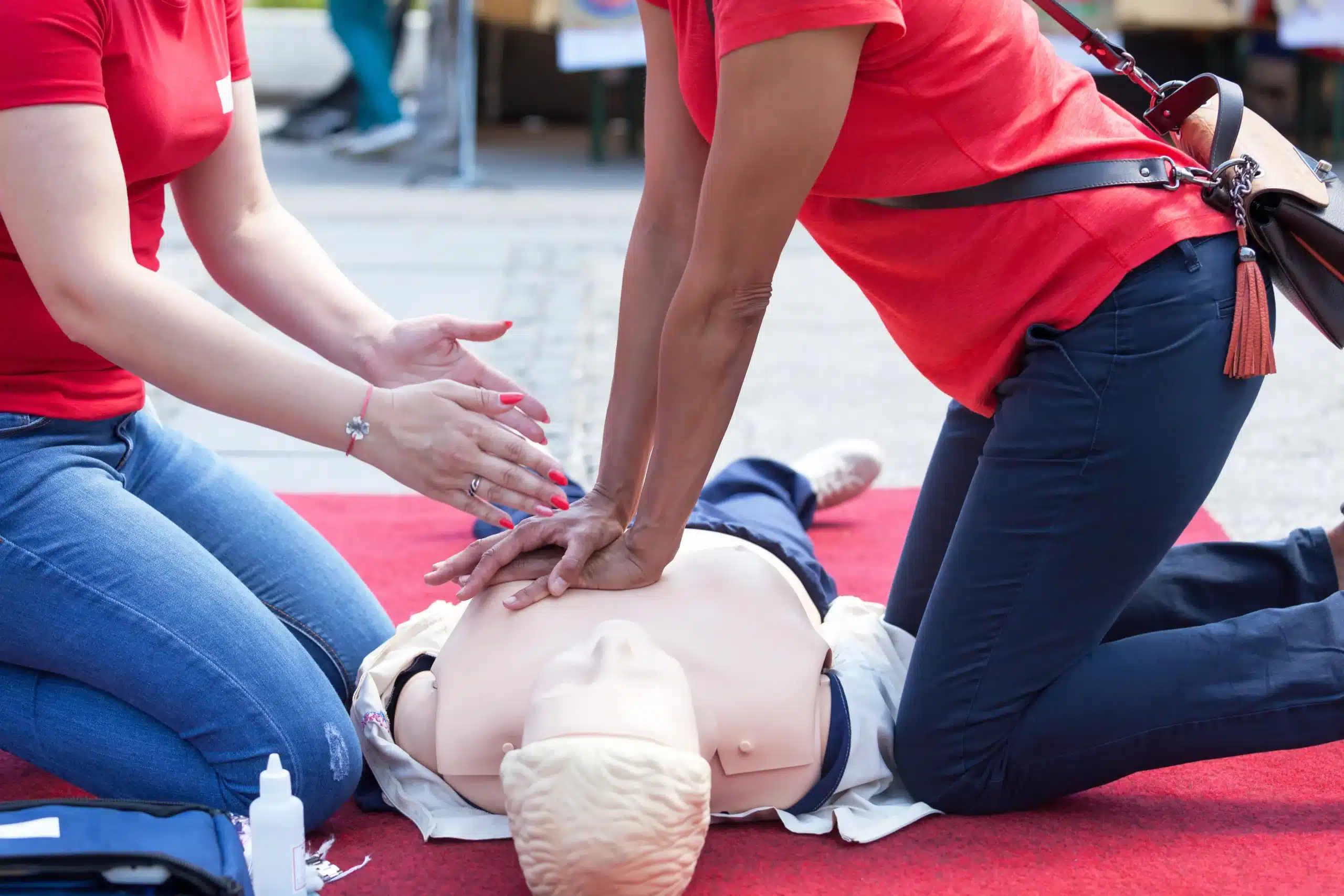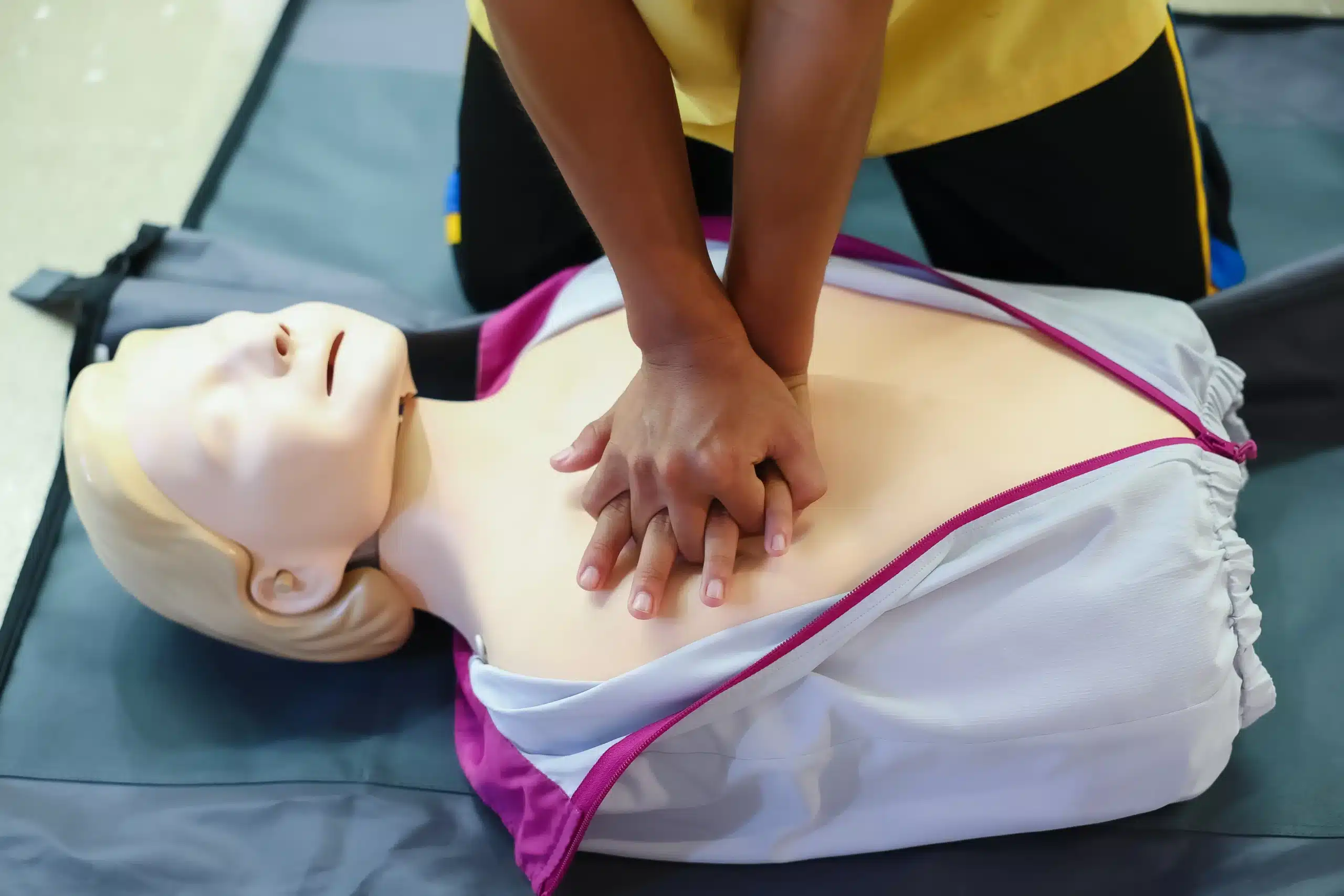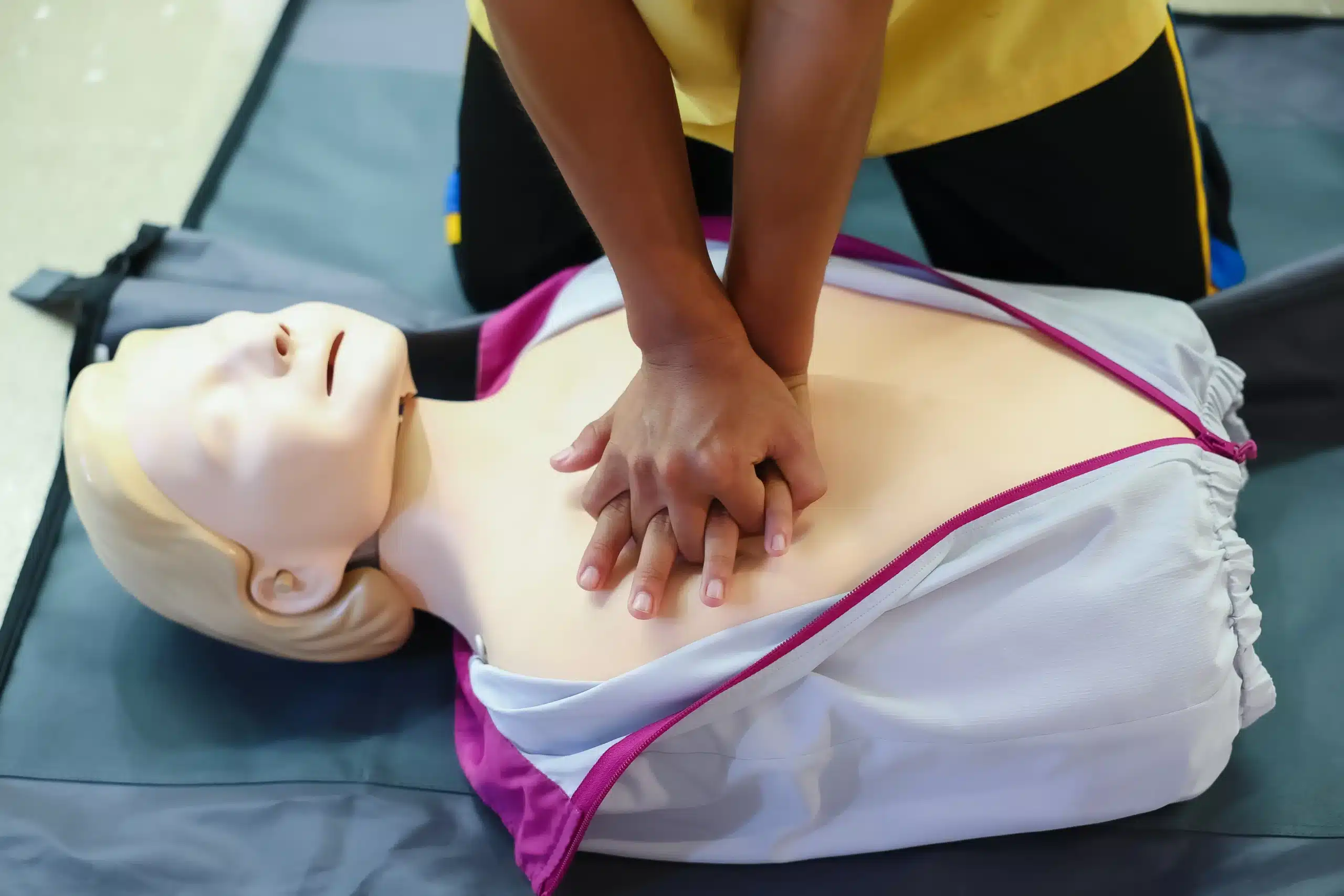From scraped knees on the playground to unexpected emergencies at home, knowing how to respond effectively can make all the difference in a child’s well-being. This guide provides a practical overview of pediatric CPR and first-aid in San Jose, offering valuable resources for parents, caregivers, educators, and anyone working with children. We’ll explore the specific techniques tailored to infants and children, where to find certified training programs in San Jose, and how to create a family safety plan to ensure you’re prepared for any situation. Join us as we empower you with the knowledge and skills to confidently handle pediatric emergencies.
Key Takeaways
- Pediatric CPR and First Aid training gives you essential skills. It goes beyond basic first aid, teaching you how to respond to medical emergencies specific to infants and children, giving you the confidence to act quickly and effectively when it matters most.
- Find a course that fits your needs and schedule. Whether you prefer in-person instruction or the flexibility of online learning, various options are available. Consider factors like cost, location, and the provider’s reputation when making your decision. Look for certified training centers like Safety Training Seminars, which offers a low-price guarantee.
- Stay prepared and practice regularly. Like any skill, CPR and first aid require ongoing practice. Regular refreshers and developing a family emergency plan will ensure you’re always ready to respond effectively in any situation. Consider online resources and local providers like Safety Training Seminars for ongoing support and training.
What is Pediatric CPR and First Aid?
Pediatric first aid and CPR training gives you the skills to respond to medical emergencies involving infants and children. It covers a range of situations, from minor injuries like cuts and scrapes to more serious events like choking, allergic reactions, and cardiac arrest. Knowing how to react quickly and effectively can make a real difference.
Why Pediatric-Specific Training Matters
Children have unique responses to illness and injury. Pediatric CPR and First Aid training equips you with techniques specifically adapted to a child’s age and developmental stage. This specialized knowledge is crucial for providing safe and effective care. For example, the depth of chest compressions during CPR differs significantly between an infant, a child, and an adult. Having this targeted training can help you avoid causing unintentional harm during a stressful emergency. The American Heart Association’s Heartsaver Pediatric First Aid CPR AED course addresses these specific needs.
Key Differences from Adult CPR
While some basic principles overlap, there are key distinctions between adult and pediatric CPR. These differences extend beyond simply adjusting the force used for compressions. For instance, the method for checking for responsiveness and the ratio of chest compressions to rescue breaths can vary. Pediatric first aid also addresses common childhood illnesses and injuries that you wouldn’t typically encounter in adult first aid, such as croup, febrile seizures, and choking hazards specific to young children. Understanding these nuances is essential. The American Heart Association offers various Heartsaver Pediatric First Aid CPR AED course options that cover these crucial differences.
Common Pediatric Emergencies
Pediatric first aid training prepares you for a wide array of situations. Learning essential techniques like CPR for children is vital for responding to emergencies such as choking, near-drowning, and sudden cardiac arrest. You’ll also learn how to manage allergic reactions, burns, cuts, and other common childhood injuries. The Heartsaver Pediatric First Aid CPR AED Online course is a valuable resource for individuals involved in childcare. Being equipped to handle these situations can significantly impact a child’s well-being.
Where to Find Pediatric CPR & First Aid Training in San Jose
Finding the right pediatric CPR and first aid training can feel overwhelming, but several excellent resources are available right here in San Jose. Here are a few places to start your search:
Safety Training Seminars
Safety Training Seminars, an official American Heart Association Training Center, offers various certification courses, including Pediatric CPR and First Aid, throughout San Jose and surrounding cities like Santa Clara and Sunnyvale. Because their BLS courses meet AHA standards, you can trust the quality of the instruction. They also offer a low price guarantee, making it an affordable option for families. Check their website for course schedules and locations convenient for you.
American Red Cross
The American Red Cross is a trusted name in emergency preparedness, and they offer Adult and Pediatric First Aid/CPR/AED training in San Jose. Their comprehensive courses cover essential skills for responding to emergencies involving children and infants. You can find class registration information on their website.
American Heart Association
The American Heart Association provides a range of CPR and first aid courses, including the Heartsaver Pediatric First Aid CPR AED course. This course focuses on the specific needs of infants and children and is ideal for parents, caregivers, and anyone working with young children. Learn more about the Heartsaver Pediatric First Aid CPR AED training and find a course near you on their website.
Local Hospitals & Community Centers
Many local hospitals and community centers in San Jose offer pediatric CPR and first aid training. Check with hospitals like Good Samaritan Hospital, Regional Medical Center of San Jose, and O’Connor Hospital, as well as community centers in your neighborhood. These classes are often a convenient and cost-effective way to learn these vital skills. Additionally, consider contacting organizations like Adams Safety Training which provides on-site training for groups and individuals at various locations in the Bay Area.
Find the Right Course: Formats, Schedules & Costs
Finding the right CPR and first aid course often comes down to three things: how you learn, your availability, and your budget. Let’s break down your options so you can find the perfect fit.
In-Person, Online, & Blended Learning
Think about your learning style. Do you prefer hands-on learning? Then an in-person class, with its direct instruction and practice, might be best. If your schedule is tight, explore online or blended learning courses. The Red Cross offers a blended format, combining online coursework with in-person skill sessions. This allows you to learn the basics at your own pace and then practice with a certified instructor.
Flexible Schedules for Busy Parents
Juggling work, family, and everything else? Look for providers that offer flexible schedules. Safety Training Seminars understands busy schedules and offers weekend and evening classes. Some providers even offer classes in multiple languages, like Spanish and Vietnamese, making training accessible to more people. If you need training at your location, check if the provider offers on-site group training.
Pricing & Comparisons
CPR and first aid training costs vary by provider and certification type. Basic CPR courses typically start around $70, while more advanced certifications like ACLS can range from $150 to $200. Don’t let cost be a barrier. Safety Training Seminars offers a low-price guarantee. Compare pricing from different providers before choosing a course.
Discounts & Group Rates
Training with a group? Ask about discounts. Many providers offer reduced rates for group registrations. Some centers offer a discount for groups of two to five people. The Red Cross also offers discounts through their Schools Program, which can make training more affordable.
Certification & Skills You’ll Gain
Getting certified in Pediatric CPR and First Aid isn’t just about checking a box—it’s about acquiring skills that can make a real difference. This training empowers you to respond effectively during emergencies, providing immediate care until professional help arrives. Let’s explore the certifications and skills you’ll gain.
Types of Certifications
Several recognized certifications demonstrate your proficiency in Pediatric CPR and First Aid. One of the most widely accepted is the Heartsaver Pediatric First Aid CPR AED certification from the American Heart Association. This comprehensive course covers essential life-saving techniques for infants and children, equipping you to handle various medical emergencies, from minor injuries to life-threatening situations. You’ll learn how to recognize the signs of distress, administer CPR, and use an AED if necessary.
Certification Validity
Your Heartsaver Pediatric First Aid CPR AED certification is valid for two years. This timeframe ensures your skills and knowledge remain current and aligned with the latest guidelines. Regular renewal helps you stay up-to-date with any advancements in pediatric emergency care.
Core Skills & Techniques
Through this training, you’ll develop a comprehensive skill set, including CPR for adults, children, and infants. You’ll also learn how to respond to common childhood illnesses and injuries, providing crucial first aid until professional medical assistance is available. The program covers a range of skills, from treating minor scrapes to managing more serious situations. You’ll practice assessing situations quickly and calmly, making informed decisions under pressure.
Hands-on Practice
Pediatric CPR and First Aid courses aren’t just lectures. They emphasize hands-on practice to build your confidence and proficiency. You’ll participate in simulated scenarios, working through real-life examples to solidify your understanding. These exercises often involve demonstrations and prompted practice, providing valuable feedback and guidance. This practical approach ensures you’re fully prepared to apply your skills effectively in a real emergency.
Choose the Right Training Provider
Finding the right training provider is just as important as choosing the right course. It can significantly impact how well you learn and retain these lifesaving skills.
Factors to Consider
Look for a training center certified by a nationally recognized organization like the American Heart Association. This ensures the curriculum meets established standards, and your certification will be widely accepted. Also, consider the instructor’s experience and teaching style. Smaller class sizes often create a more comfortable learning environment where you can ask questions and get personalized feedback. Finally, check if the provider offers ongoing support, like refresher courses or access to online resources. Safety Training Seminars prioritizes excellent customer service and offers a low price guarantee, making them a valuable option in San Jose.
Matching Courses to Your Needs
Not all pediatric CPR and first aid courses are the same. Some focus on managing illnesses and injuries in children and infants until professional help arrives, like the Heartsaver Pediatric First Aid CPR AED course. Others, like dedicated pediatric first aid training, provide more in-depth information on caring for young children. Consider your current knowledge, comfort level, and the age of the children you’ll be caring for when selecting a course. If you’re a childcare provider in California, you might need specialized training. Safety Training Seminars offers courses covering health, safety, and lead poisoning prevention to meet these requirements. For healthcare professionals seeking to maintain their certifications, the American Heart Association’s RQI program is a convenient option.
Tips for Maximizing Your Training
To get the most out of your training, take advantage of all available resources. Many providers offer online materials, manuals, and refresher activities. Actively participate in practice scenarios and ask for feedback. The more hands-on practice you get, the more confident you’ll become. Look for courses that incorporate scenario-based problem-solving and feedback to solidify your skills. And remember, learning CPR and first aid is an ongoing process. Regularly refreshing your skills will ensure you’re always prepared to act in an emergency. You can find convenient BLS courses in San Jose offered by Safety Training Seminars. They also have a low price guarantee, ensuring you receive high-quality training at a competitive price.
Benefits of Certification
Getting certified in Pediatric CPR and First Aid isn’t just about acquiring a credential—it’s about gaining valuable skills and peace of mind. Here’s how certification benefits you:
Confidence in Emergencies
Emergencies involving children can be incredibly stressful. Knowing you have the skills to respond effectively makes all the difference. Pediatric CPR and First Aid training equips you with the knowledge and techniques specifically tailored to children’s needs, replacing fear with confidence. This preparation empowers you to act quickly and decisively when a child’s life might depend on it. It’s about being the one who can help, rather than feeling helpless. For those in San Jose and surrounding areas, CPR training is readily accessible.
Enhanced Child Safety Knowledge
A deeper understanding of child safety goes hand-in-hand with Pediatric First Aid training. You’ll learn to recognize potential hazards and take preventative measures, creating a safer environment for the children in your care. This knowledge extends beyond CPR to cover common childhood illnesses and injuries, giving you the skills to manage everything from minor cuts and scrapes to more serious situations. Online resources can supplement your in-person training and provide helpful information for parents and caregivers. Check out our blog post for more tips on pediatric first aid.
Career Advantages
For many professionals working with children, holding a Pediatric CPR and First Aid certification is a requirement—and even when it’s not mandatory, it’s a significant asset. A two-year certification, whether earned in person or through a blended learning format, demonstrates your commitment to child safety and enhances your professional qualifications. It can open doors to new opportunities and give you a competitive edge. The Red Cross offers various certification courses in San Jose, CA.
Maintain Your Skills & Create a Family Safety Plan
Knowing CPR and first aid can make all the difference in an emergency. But like any skill, regular practice is essential. This section covers how to maintain your skills and create a family safety plan, so you can confidently handle any situation.
Keep Your Skills Sharp
First aid and CPR skills can fade over time. Regular practice is key to staying prepared for real-life emergencies. Think of it like riding a bike—you never truly forget, but practice helps you stay sharp and react instinctively. The Red Cross offers resources and training materials to refresh your skills and stay up-to-date on the latest techniques. Even quick refreshers can significantly improve your response in a stressful situation. Consider incorporating practice scenarios into your routine to build muscle memory and confidence.
Refresher Training Resources
Beyond practicing on your own, consider periodic refresher courses. The American Heart Association offers resources like the Heartsaver Pediatric First Aid CPR AED course, designed to help you manage childhood illnesses and injuries until professional help arrives. This is especially valuable for parents, caregivers, and anyone working with children. Refresher courses reinforce best practices and ensure you’re ready to act quickly. Check with local providers like Safety Training Seminars for refresher courses in your area. They can offer guidance on the best fit for your needs and schedule.
Build a Family Emergency Plan
Equipping yourself with first aid and CPR knowledge is a great first step. But a solid family emergency plan is equally important. This plan should include emergency contacts, meeting points, and procedures for different scenarios (fire, earthquake, etc.). Discuss the plan with your family, ensuring everyone understands their roles. Online resources can help you create a comprehensive plan tailored to your family. A well-defined plan reduces risks and provides peace of mind, knowing you’re prepared. Remember to review and update your plan periodically, especially as your family’s needs change.
Related Articles
- Pediatric CPR & First-Aid Classes in Sunnyvale – San Jose CPR Classes
- CPR Classes in San Jose: Your Complete Guide – San Jose CPR Classes
- Pediatric Advanced Life Support (PALS) in San Jose – San Jose CPR Classes
- CPR Certification San Jose: Your Complete Guide – San Jose CPR Classes
- American Heart Association Training in San Jose – San Jose CPR Classes
Frequently Asked Questions
Is pediatric CPR significantly different from adult CPR? Yes, there are important differences. It’s not just about using less force. The steps for checking responsiveness, the rate of compressions, and even the hand placement can vary depending on the child’s age and size. Pediatric CPR training teaches you these specific techniques, ensuring you can provide safe and effective care.
What kind of emergencies does pediatric first aid cover? Pediatric first aid training prepares you for a wide range of situations you might encounter with infants and children. This includes everything from everyday bumps and bruises to more serious events like choking, allergic reactions, burns, and seizures. You’ll learn how to assess the situation, provide immediate care, and decide when to seek professional medical help.
How can I fit CPR and first aid training into my busy schedule? Many training providers understand the demands of busy schedules and offer flexible options. Look for classes held on evenings, weekends, or even online or blended learning formats that combine online coursework with in-person skills sessions. Some providers also offer on-site training, bringing the class to your location.
How much does pediatric CPR and first aid certification cost, and how long is it valid? Costs vary depending on the provider and the type of certification. However, many providers offer competitive rates and discounts for group registrations. Certification is typically valid for two years. Check with different providers in your area to compare pricing and find the best fit for your budget.
What should I look for when choosing a training provider? Look for a provider certified by a nationally recognized organization like the American Heart Association. This ensures the curriculum meets established standards, and your certification will be widely accepted. Consider the instructor’s experience, class size, and whether the provider offers ongoing support or refresher courses. Reading reviews and comparing options can help you find the best fit for your learning style and needs.


